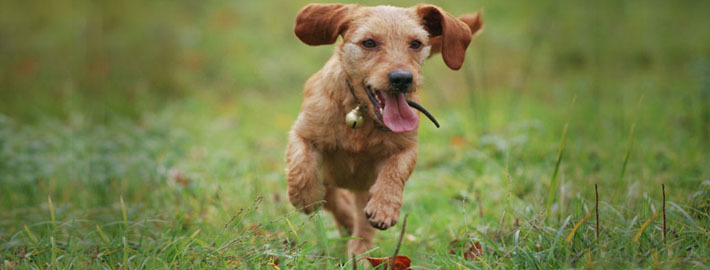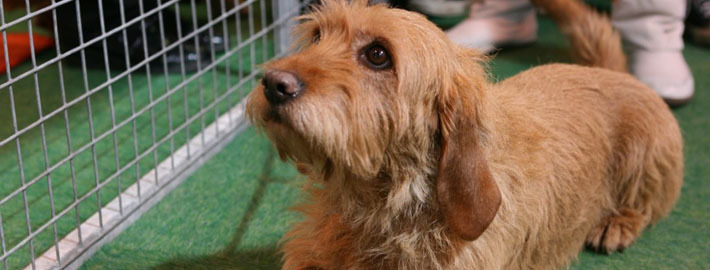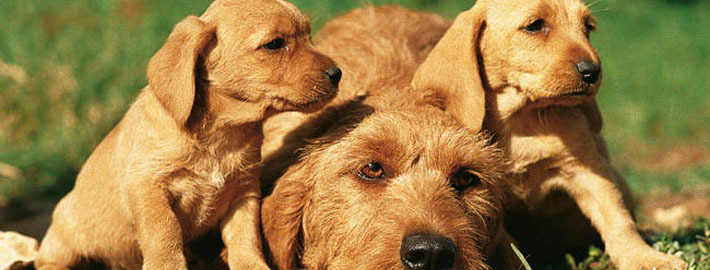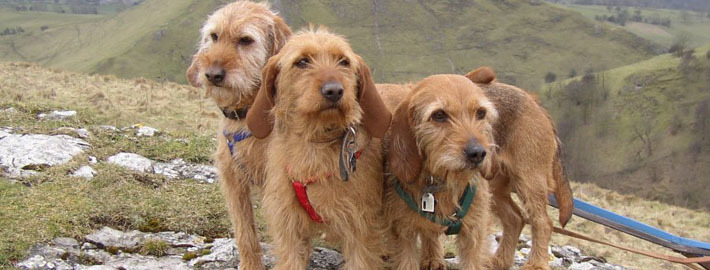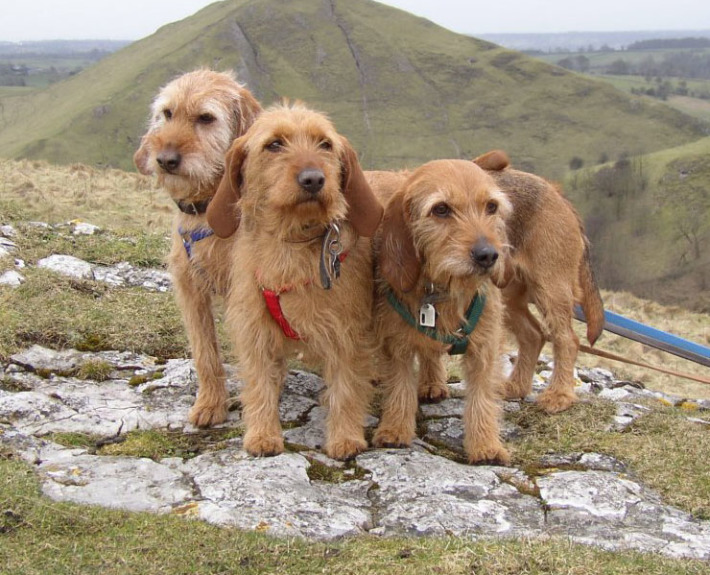What makes the Basset Fauve de Bretagne Unique?
Basset Fauve de Bretagnes are commonly found in Europe where they are growing in popularity as both game dogs and family pets.
Breed Groups
Page Contents
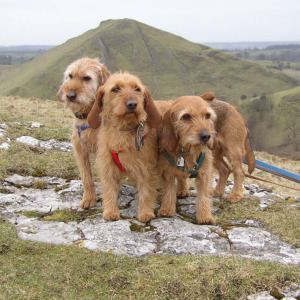
Is the Basset Fauve de Bretagne Right For You?
Basset Fauve de Bretagnes are lively, amicable, and sociable. Timidity is considered to be a serious flaw in these dogs. Members of this breed that have been properly socialized from puppy hood typically get along well with children as well as other pets,
As is the case with most hounds, Basset Fauve de Bretagnes are selectively obedient but they can nonetheless be trained to follow their owner’s commands for the most part. These dogs are best suited for households in rural areas and members of this breed enjoy having a safely fenced enclosure in which to run and play.
In 5 Words
- Adaptable
- Companionable
- Stubborn
- Courageous
- Affectionate
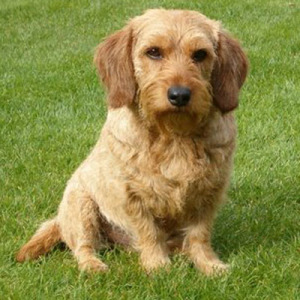
Characteristics
Learn About the Basset Fauve de Bretagne
Description
General Description
Basset Fauve de Bretagnes are small hounds with athletic bodies. They greatly resemble Basset Hounds but have longer legs and also a tidier form. An elongated, tapered muzzle is a feature of this breed. These dogs likewise have dark noses and eyes. Their teeth should meet in a scissors bite. Members of this breed additionally possess a tapered skull, a short neck, and low-set, drop ears. Tapered, medium length tails can be found on these dogs. Their straight legs also enable them to run quickly.
Size
Basset Fauve de Bretagnes weigh 36 to 40 pounds (16 to 18 kilograms) on average. Members of this breed stand between 12.5 and 15.5 inches (32 and 39 centimeters) in height. According to the United Kennel Club breed standards, slight variations in size are permissible for otherwise “outstanding specimens”. Indeed, some of these dogs can end up being as tall as a Labrador but this is not at all a common characteristic.
Coat
These dogs have a coarse, thick coat that protects them from inclement weather. Their fur tends to be lighter in hue on their bodies than on their ears. All varieties of fawn are considered acceptable according to the United Kennel Club standards which go on to mention that this includes color hues ranging from “wheaten to brick red”. Some Basset Fauve de Bretagnes are born with black patches that may disappear as they get older. White patches may also be present on these dogs. Breed standards state that “a few black hairs on the ears or the back” or “a small white spot on the chest” will be permitted but this is not a desirable trait. Despite the fact that breed standards show a preference for solid color animals, prospective owners should keep in mind that a lack of conformity in appearance will not interfere with an individual’s ability to be a good pet or hunter.
Short History of the Basset Fauve de Bretagne
These hunting dogs were derived from the larger Grand Fauve de Bretagne, a breed which has since gone extinct. Members of the newer variety were historically used to hunt many different types of game including deer, rabbits, boars, and foxes. After World War Two, it is thought by some that Petit Basset Griffon Vendéen and wirehaired Dachshunds were added to the breed’s lineage in order to keep it viable. This theory is disregarded altogether by some French breed clubs. The dogs made their way over to the United Kingdom in the 1980s. Basset Fauve de Bretagnes eventually obtained admittance to the United Kennel Club in 1996. However, members of this breed were considered a rare variety of dog until 2007, when they were taken off the list.
Temperament
The Basset Fauve de Bretagne is a social breed and will get along well with other animals. When hunting, they will often do so in pairs. The Basset Fauve de Bretagne also gets along well with children. However, it is necessary to socialize them from a young age to avoid any timidness.
Caring for Your Basset Fauve de Bretagne
General Health
Members of this breed typically live for 10 or more years. In the United Kingdoms, no hereditary disorders have thus far been reported but epilepsy has been known to strike members of this breed in other portions of Europe. Heart failure, kidney failure, and cancer are currently the main health concern that these dogs face. Problems with their reproductive systems, ears, and eyes have also been known to occur in Basset Fauve de Bretagnes from time to time.
Care
Daily
As they were created to be able to perform a full day’s worth of fieldwork, adult Basset Fauve de Bretagnes require copious amounts of exercise. They need at least two long walks every day if not more.
Weekly
To prevent tooth decay and foul breath, pet owners will want to brush their dog’s teeth on a regular basis.
Monthly
Parasite prevention medication should be given to dogs to keep them healthy. Most of these products will need to be administered once per month in order to obtain adequate results.
Grooming & Bathing
Basset Fauve de Bretagnes do not have to be professionally groomed. However, these dogs will need to be brushed on a regular basis. They should also have their coats stripped about once every three to four months to maintain their appearance. Hand stripping a dog’s coat is an easy procedure, but some owners may choose to take their pet to the groomer instead of doing it themselves. Basset Fauve de Bretagnes should be bathed as needed. Their toenails will also need to be kept clipped and any excess ear trimmed in order to keep them looking their best.
Exercise & Training
As is the case with most hounds, Basset Fauve de Bretagnes are selectively obedient but they can nonetheless be trained to follow their owner’s commands for the most part. These dogs are best suited for households in rural areas and members of this breed enjoy having a safely fenced enclosure in which to run and play. However, Basset Fauve de Bretagnes may be alright in cities provided they get enough exercise. Members of this breed should not be allowed off their leashes in unsafe areas because they will indulge in their natural tendency to track game and quickly get away from their human companions. This can lead to the dog in question becoming lost or possibly being hit by a car. One of the leading causes of death for this breed is run-ins with automobiles so owners will need to be vigilant about keeping an eye on their pets.

